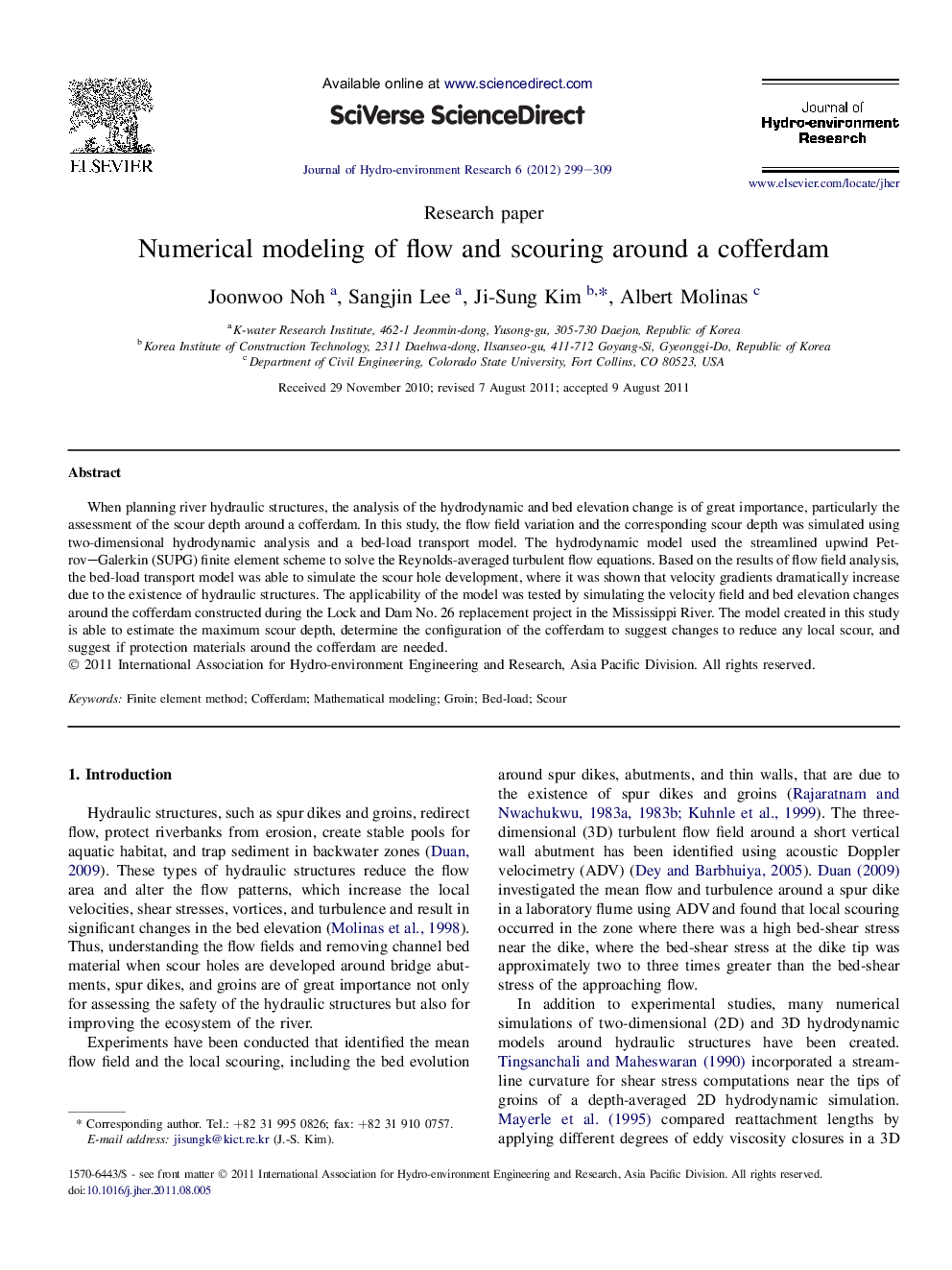| Article ID | Journal | Published Year | Pages | File Type |
|---|---|---|---|---|
| 4493711 | Journal of Hydro-environment Research | 2012 | 11 Pages |
When planning river hydraulic structures, the analysis of the hydrodynamic and bed elevation change is of great importance, particularly the assessment of the scour depth around a cofferdam. In this study, the flow field variation and the corresponding scour depth was simulated using two-dimensional hydrodynamic analysis and a bed-load transport model. The hydrodynamic model used the streamlined upwind Petrov–Galerkin (SUPG) finite element scheme to solve the Reynolds-averaged turbulent flow equations. Based on the results of flow field analysis, the bed-load transport model was able to simulate the scour hole development, where it was shown that velocity gradients dramatically increase due to the existence of hydraulic structures. The applicability of the model was tested by simulating the velocity field and bed elevation changes around the cofferdam constructed during the Lock and Dam No. 26 replacement project in the Mississippi River. The model created in this study is able to estimate the maximum scour depth, determine the configuration of the cofferdam to suggest changes to reduce any local scour, and suggest if protection materials around the cofferdam are needed.
► Two-dimensional hydrodynamic and sediment transport model simulated flow field and corresponding bed elevation changes. ► Datasets for measured flow field and bed elevation around groin have been chosen to compare with simulated results. ► The developed model has been tested through the simulation of flow field and bed elevation changes around the cofferdam.
